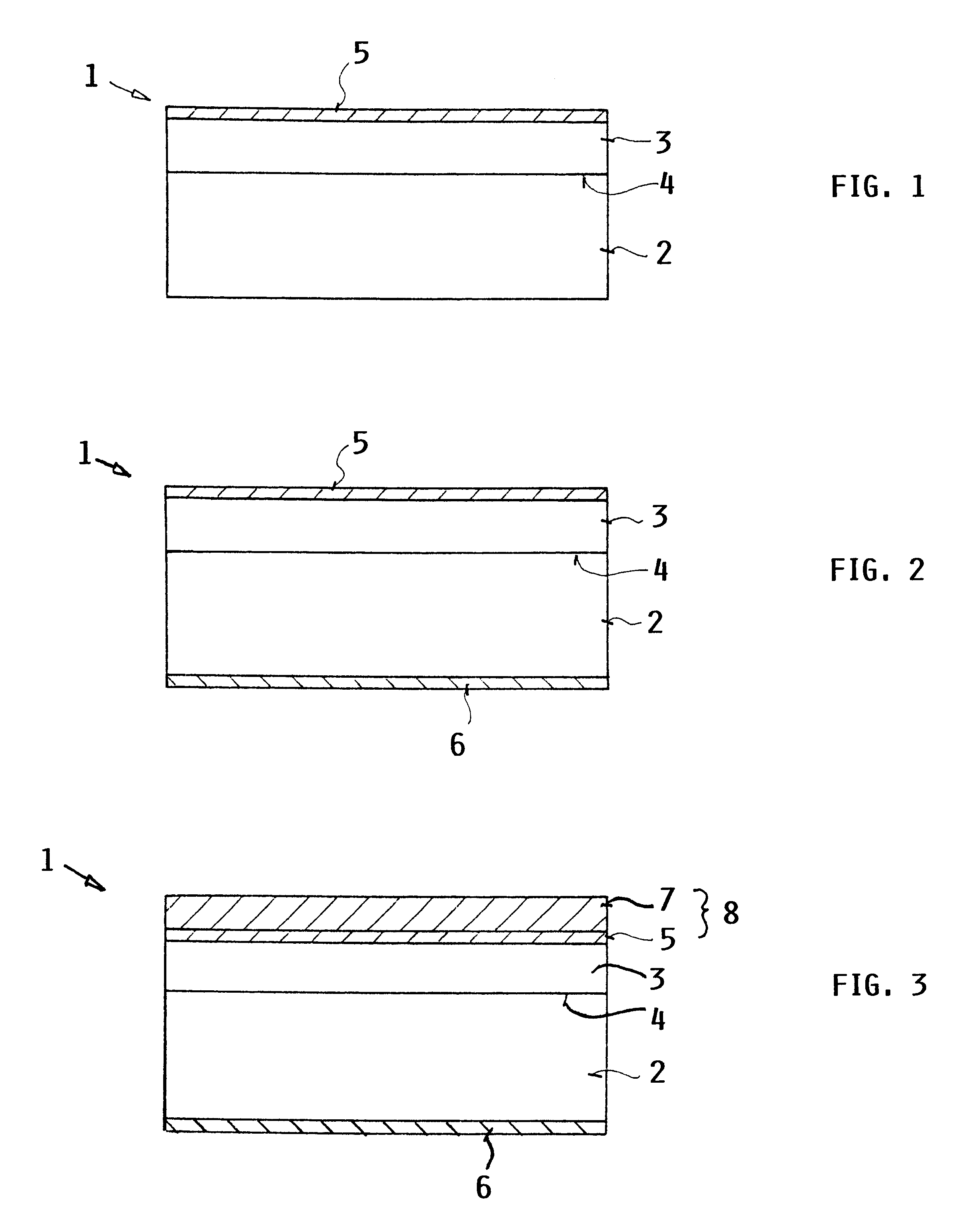Multilayer contact electrode for compound semiconductors and production method thereof
- Summary
- Abstract
- Description
- Claims
- Application Information
AI Technical Summary
Benefits of technology
Problems solved by technology
Method used
Image
Examples
Embodiment Construction
FIG. 1 shows the layer sequence of a semiconductor body or chip 1 for an infrared diode made of a III / V-mixed crystal or compound semiconductor such as gallium arsenide or gallium aluminum arsenide. The chip 1 has an n-type semiconductor layer 2 and a p-type semiconductor layer 3 which constitutes the radiation emitting surface of the chip 1. A p-n junction 4 is present between the n-type layer 2 and the p-type layer 3. Both semiconductor layers 2 and 3 may be made individually of several different layers. For example, the n-type semiconductor layer 2 may comprise an n-type gallium arsenide substrate and an n-type epitaxial semiconductor layer.
The present method is performed as follows. A first metallized or metal layer 5 of aluminum having a thickness within the range of about 0.01 .mu.m to about 0.5 .mu.m is applied to the p-type top surface of the semiconductor layer 3 at a temperature above 350.degree. C. This application may, for example, be made by vapor deposition or cathode ...
PUM
 Login to View More
Login to View More Abstract
Description
Claims
Application Information
 Login to View More
Login to View More - R&D
- Intellectual Property
- Life Sciences
- Materials
- Tech Scout
- Unparalleled Data Quality
- Higher Quality Content
- 60% Fewer Hallucinations
Browse by: Latest US Patents, China's latest patents, Technical Efficacy Thesaurus, Application Domain, Technology Topic, Popular Technical Reports.
© 2025 PatSnap. All rights reserved.Legal|Privacy policy|Modern Slavery Act Transparency Statement|Sitemap|About US| Contact US: help@patsnap.com



